Existing User Log In
New User Registration
Register for a free account to gain full access to the VGChartz Network and join our thriving community.



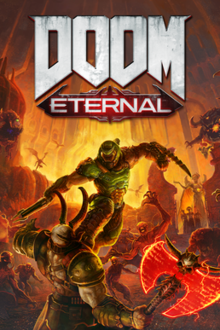

America - Front


America - Back

Bethesda hasn’t exactly been riding a wave of success as of late. From the rocky reception to Fallout 76 and the widely panned Wolfenstein: Young Blood, there hasn’t been a positive reception towards most of Bethesda’s recent output. Fortunately for them, however, the Doom Slayer is back, here to save the day for Bethesda and the Earth from demons. But does id Software’s sequel of the rebooted Doom help to right the ship? As it turns out, there are few better ways to get back on track than by killing some demons.
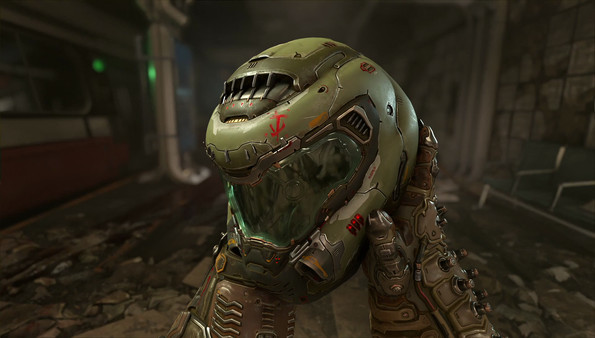
Doom Eternal’s narrative sort of picks up from the cliffhanger-ish ending of 2016’s Doom. After having Mars overrun wasn’t enough to convince the cartoonishly evil corporations to stop trying to use hell as an energy source, demons have officially graduated from trashing Elon Musk’s favorite tourist spot in the solar system to invading Earth. The game starts in media res, with the Earth so badly beaten that the moon has somehow exploded from it all, and the Doom Slayer hanging around in a giant space castle before dramatically putting his armor on and charging into the fray. I say that the game “sort of” picks up from 2016’s ending because we’re largely left to figure out how the Earth got to this point ourselves.
There’s a surprisingly large emphasis on story in Eternal, far more so than in any previous game. Along with the various lore texts and floating holograms that spew exposition at you constantly, there are numerous cutscenes towards the latter half of the game designed to provide more of a backstory to the Doom Slayer. Unfortunately, the more story focused cutscenes don’t really make much sense without putting some serious time into reading the lore, and stopping constantly to read text logs feels at odds with the overall tone and pacing of the game.
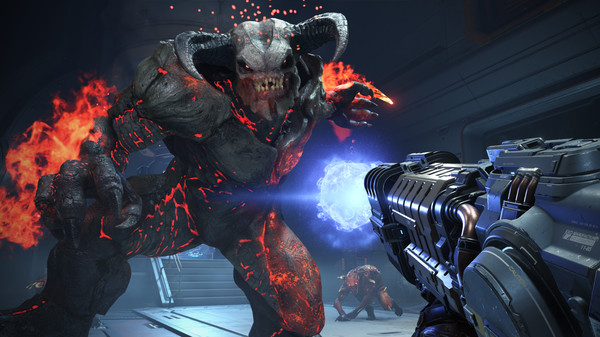
But despite id’s efforts in creating a narrative, there probably aren’t many people playing Doom for the story, and if you are then I imagine you’re likely up to date on enough of the lore that this won’t present a problem for you. The real attraction here is the combat, of course, and Eternal certainly picks up where 2016 left off in that regard. The pace of the action is even faster than last time, if you can believe that, and still places the emphasis squarely on player movement and getting in and out of dangerous situations while maintaining enough of a grasp on your surroundings to be able to accurately aim at the demons shooting at you. If you’re looking for an FPS that prioritizes having fun first and foremost, this is definitely the game for you.
Despite the increase in pace during combat, there’s also more of an emphasis on making the downtime between battles more engaging. Eternal often handles this with platforming segments or some more cutscenes. One particularly self-congratulatory cutscene sees Doom Slayer walk past a bunch of humans who tirelessly express how cool he is between stammering gasps of awe. The platforming, conversely, is more substantive, and while it is a touch simplistic, it’s vastly improved from 2016 and is surprisingly fun. There’s been much more of an effort to give the Slayer more of a free-flowing feel, with air dashes, swinging from bars hanging in the air, and leaping from special climbable walls. While these segments are fun, Eternal also has some questionable diversions, such as some not so great swimming segments that gave me flashbacks to the worst parts of the original Devil May Cry. On the whole, though, the downtime parts of the game are a step up from 2016.
While the additional diversions may have some ups and downs, the mechanical alterations in combat are almost exclusively positive changes, and provide the player a lot more to work with. Along with the returning chainsaw and glory kills that drop ammunition and health respectively when used to kill enemies, Eternal introduces the “flame belch,” a slow to recharge flamethrower which makes enemies drop armor refills. It’s a solid addition, as it gives the player tools to now address shortages in any of the three major areas: health, armor, and ammo. And you will need to make use of all of these, especially on higher difficulties where coming into a fight not fully stocked in any category can lead to a swift death. One particular example for me was figuring out to quickly use flame belch on enemies hit by a freeze grenade to get lots of armor drops while simultaneously dishing out significant damage. It's these little touches that add an additional degree of on the fly strategy, and it makes the fighting all the more enjoyable.
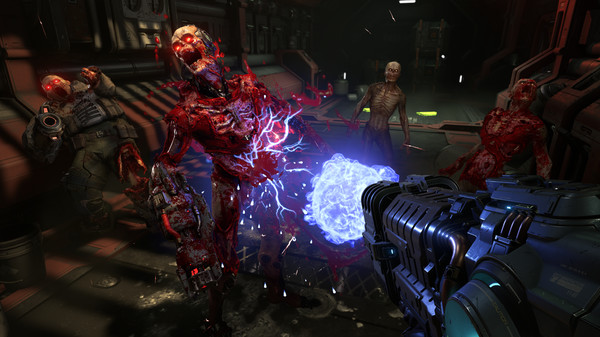
The arenas that battles take place in are also a significant step up from 2016, which isn’t really meant as a critique of the previous game as much as it is a compliment for just how well Eternal pulls these off. The devs at id truly have a knack for crafting fun areas that allow for players to jump, dash, and swing away from enemies. Survival again almost requires that you make use of the various environmental mobility aids left around to get out of tight situations. The feeling of dashing into a dense cluster of enemies to secure a couple of kills before nimbly hopping out with the use of an air dash and a bar to swing off of is immensely satisfying, and it’s one most players will feel repeatedly throughout the game.
Another new feature is the addition of extra lives, which essentially function as mid-fight revives when your health depletes. Along with the returning upgrade points from 2016, these are often rewards for players who take the time to explore the levels. They’re a nice little touch and a cool way to reward exploration. That said, one rather minor criticism is that I wish they would let players choose when they want to revive; i.e. let me choose whether I want to revive, or to accept death and keep it in store for a later encounter. As it stands, they’re used up as soon as your health hits zero, and if you get a game over anyway, you don’t get the extra life back. If they’re that limited of a resource, it’d be nice to have a little more control over how they’re managed.
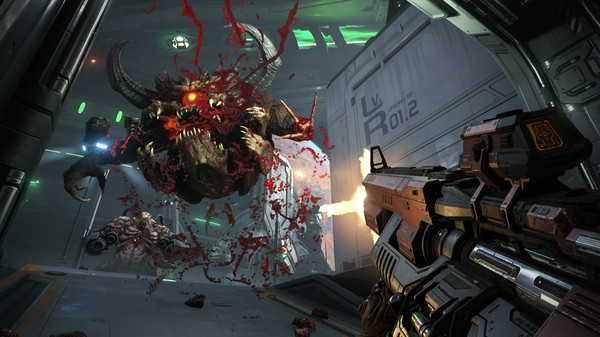
Perhaps the most notable change of all, however, is that the game’s tougher enemies now come with weak points. This serves as a way to give the enemies a bit more variety while also rewarding the player for accurate aiming and taking the time to familiarize themselves with the game as a whole, providing an additional layer of depth that 2016 lacked. Having said that, it is a little disappointing that the game opts to simply flat out tell the player what every enemy’s weak point is. I feel like letting the player organically discover them would’ve added an extra layer of tension to the initial encounters while also rewarding observant players. Instead, the game simply has a big gray text box pop up explaining where the weak point is and, in some cases, even providing a detailed guide for how to most effectively attack them.
While we’re on the subject of handholding, one area that Eternal stumbles a bit is the consistent amount of tutorializing that it does. Enemies, mechanics, and new abilities will all pause the game when they are introduced in order to explain how they function with a text box, which runs somewhat counter to the fast pace that Eternal keeps up everywhere else. Several upgrades (such as the aforementioned chainsaw and Flame Belch) even go so far as to flat out transport you to a virtual reality room ala Metal Gear Rising and require that you test them out on several dummy enemies before you’re allowed to continue. It’s unfortunately lazy level design and there are vastly better ways of tutorializing new abilities and features.
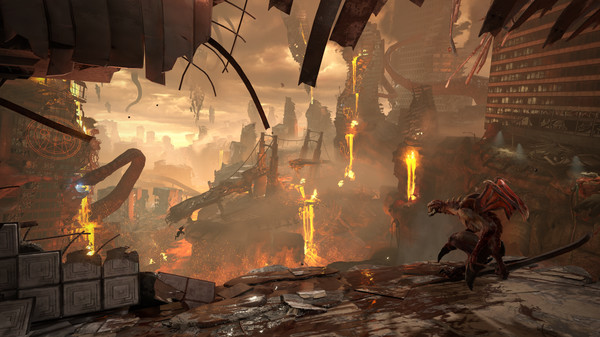
There are a couple of nitpicks that I can carry over from 2016 Doom as well. I’m still not a fan of how some of Doomslayer’s more powerful abilities work on cooldown timers rather than being built back up by dealing out damage, as that encourages running and hiding against tougher but slower enemies. And, again, while I like the idea of having melee “glory kills” to recover health, there are still only a couple of takedown animations per enemy. While they’re mercifully quick, it doesn’t stop them from getting rather old by the end of the game.
I should mention that none of these are especially major grievances, primarily because, again, the actual moment to moment combat is still extremely well handled and fun. And that's perhaps what sets Doom apart from most of its other current FPS bretheren; it still prioritizes being fun first and foremost. There's no grinding, no reloading, no cover mechanics, no loot boxes. Nearly everything in the combat is designed around being fun to play first and foremost, and for met at least it's refreshing to step back into this world after seeing the direction shooters have taken since 2016's Doom (and before).
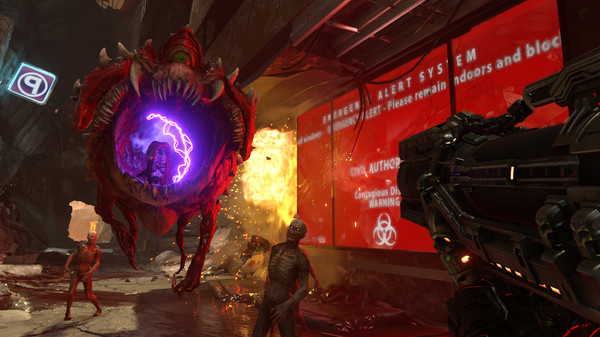
Technically speaking Eternal handles very well, running at well over 60 FPS with no noticeable dips below on my PC (just remember to turn the Steam overlay off). Environments are also surprisingly varied, especially coming from 2016’s selection of grey corridors and reddish-brown Mars terrain. Guns look and animate quite well. Locations are rendered quite impressively as well. It’s a fun game to both look at and listen to, with Mick Gordon’s score being another highlight. The up tempo metal soundtrack probably isn’t something I’d listen to in my free time, but it does a very good job of fitting the atmosphere and getting players in the mood to slay some demons.
One last aspect of Eternal is the new multiplayer “battlemode.” Battlemode pits two player-controlled demons against a Slayer in a series of deathmatch rounds. While the Slayer plays pretty similarly to how he does in the campaign, I find playing as demons to be the most interesting. It feels a bit like controlling one of the super zombies in Left 4 Dead, relying on traps and strategy to get the drop, only with far more complexity and the ability to summon other AI controlled demons. The Slayer wins if they kill both player controlled demons, while the demons win if they can manage to kill the Slayer. I can’t speak to how balanced it is as my results were all over the place, getting eviscerated in some games while dominating others, but it’s incredibly enjoyable regardless.

Despite the minor criticisms I’ve brought up, Doom Eternal is a blast to play. It takes the frenetic, fast paced gameplay of its predecessor and amps it up even further while introducing a number of improvements and mechanics that add more depth. Eternal is a game that understands what it wants to be and makes no bones about it; and what it wants to be is a roller coaster ride that is about having fun from start to finish.









